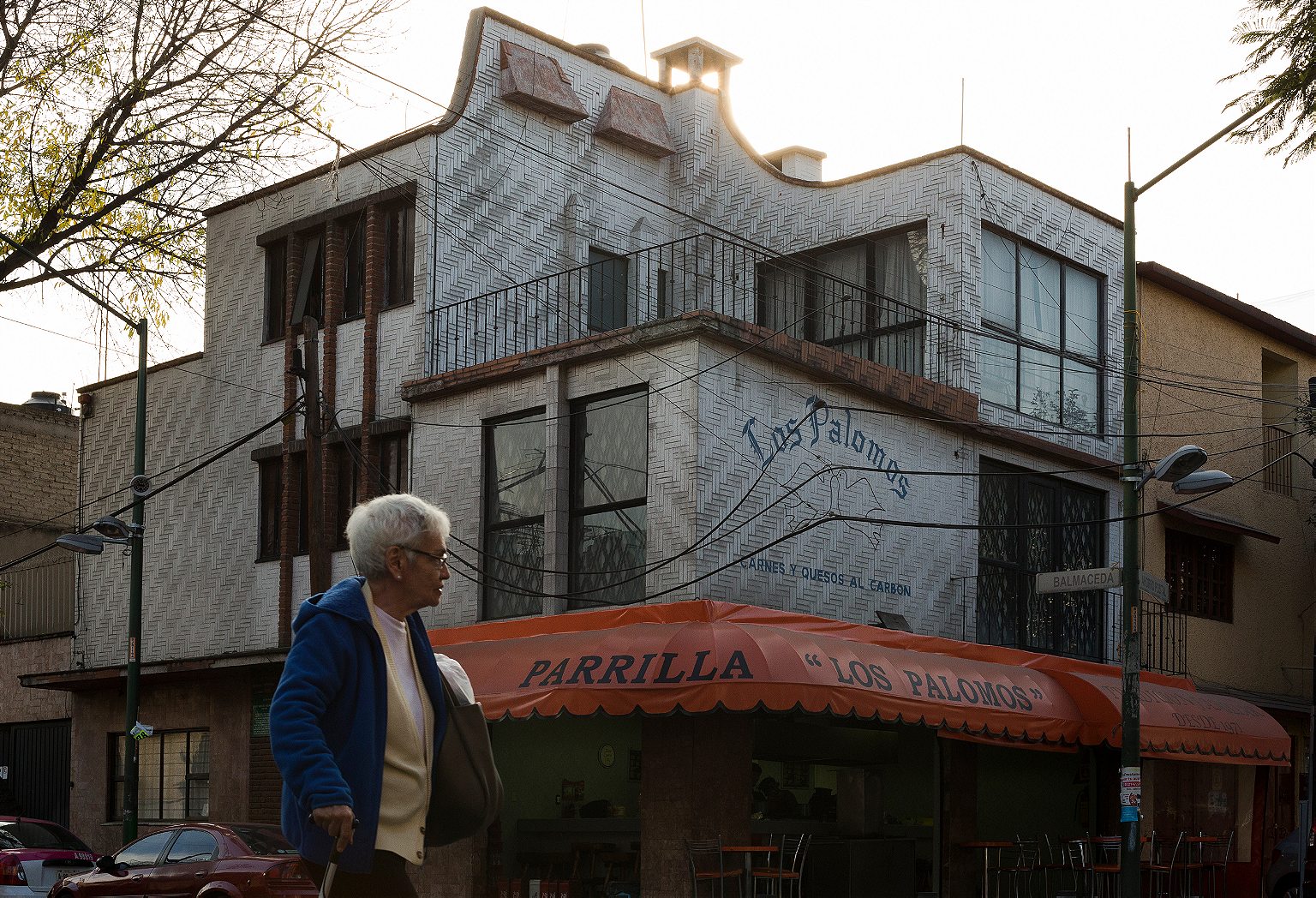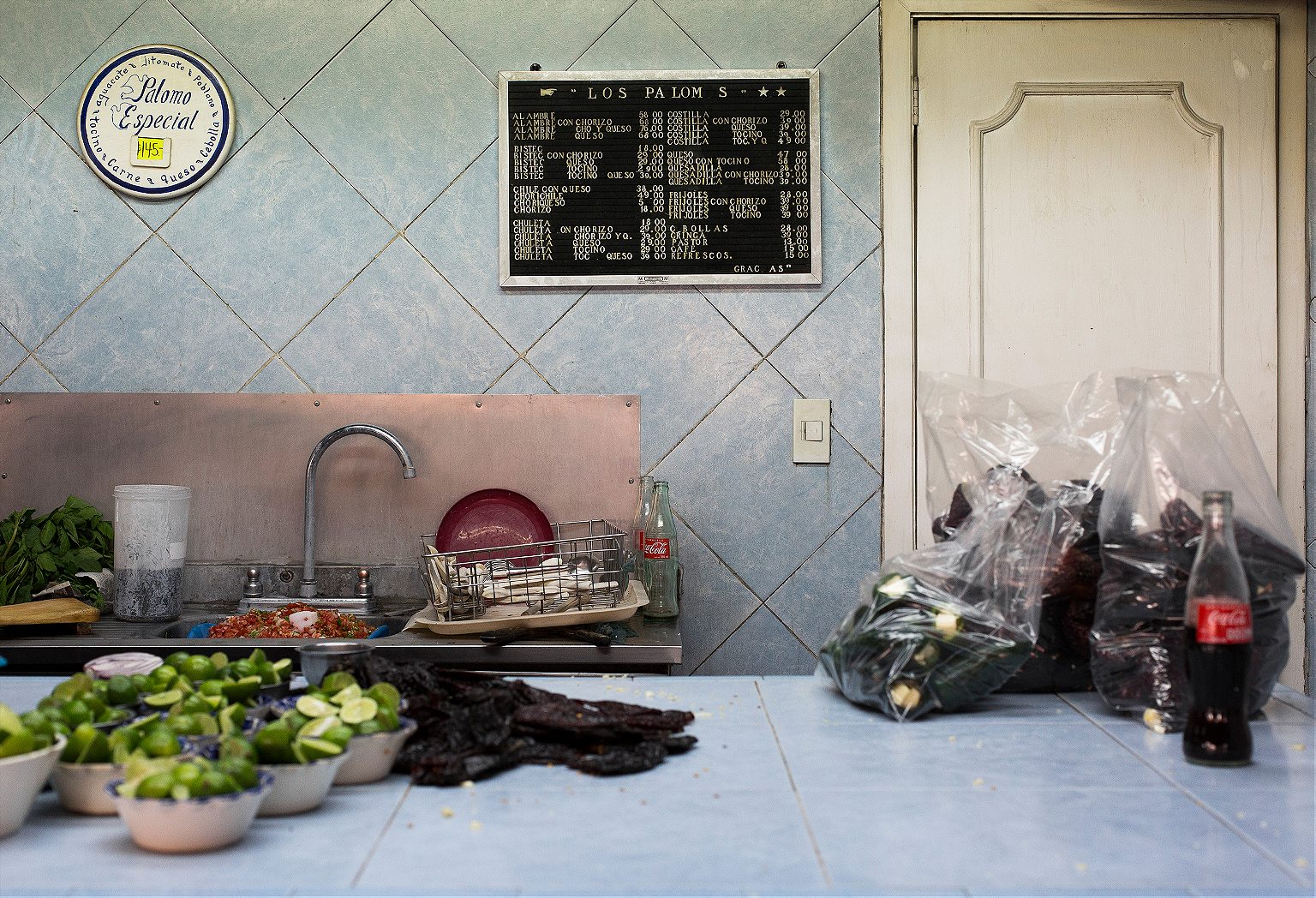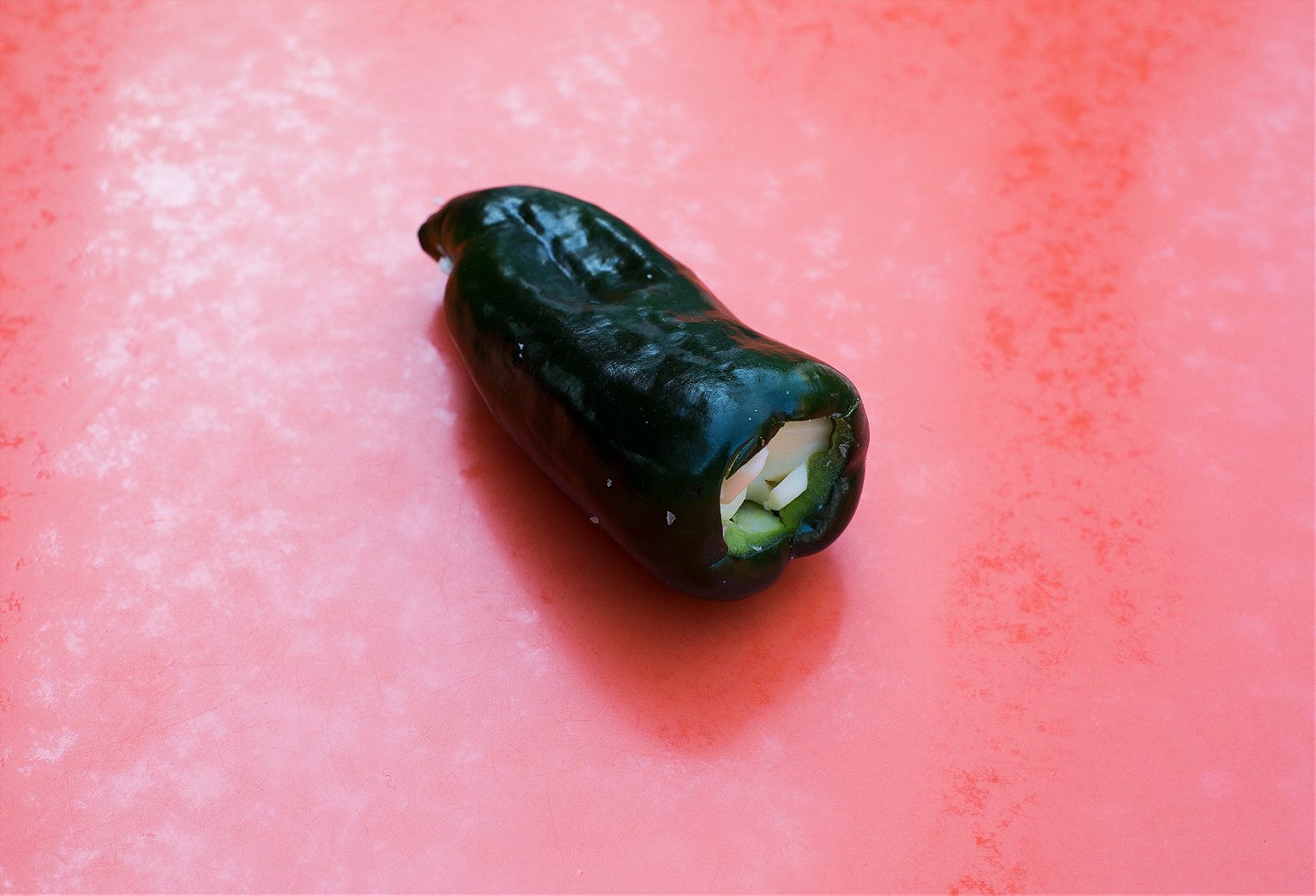Mexico City’s local dive would be New York City’s food Mecca. Discuss.
The first time I saw the taqueria Los Palomos, I thought it was on fire. I was in a new neighborhood, with a new guy, and we had turned onto a street cloaked in smoke coming from a corner restaurant bright with ugly fluorescent lights and the occasional burst of flame. Waves of thick smoke rolled out from under the orange awning. I was taken aback, surprised to see patrons sitting inside, calmly ordering tacos and Cokes, their jackets and freshly washed hair marinating in the black plumes coming off the plancha.
As it turned out, the pall of smoke is this taqueria’s natural state. Since 1971, Los Palomos, on the corner of Ahorro Postal and Balmaceda, has offered carnes y queso al carbon to a neighborhood called Josefa Ortiz de Domínguez that few people have heard of even here in Mexico City, the years marked by a grey soot stain that darkens the top third of the interior walls. The area is quiet and residential; a place that no tourist would have reason to visit. Locals might know it because it is near a circus off a main highway. And I came to know it when I started dating someone new, seduced into, and later by, a new part of the city.
Open from 5pm to 1am, the taqueria serves grilled beef in various forms, excellent pastor, and soupy black beans. But their most famous dish—if you can call a place that no one outside the colonia has heard of ‘famous’—is their chile rojo, a taco made from a dried ancho chile stuffed with cheese and fried on the griddle, a stripped down version of chile relleno with no breading, no batter, no deep frying. If you mention Los Palomos to locals, they’ll say, “Ah yes, the chile rojo place.”


Wizened and wrinkled and the color of dried blood, an ancho chile (the dried form of a ripe red poblano, the same chile that, in its fresh green form, is used for most chiles rellenos) turns up at Los Palomos stuffed with mild, white panela cheese. Stacks of the chiles sit in a tray on the counter waiting for their moment on the plancha. When an order comes in, a chile slides onto a searing black flattop, slick with rendered beef fat from costilla, bistec, and arrachera.
The chile is slowly turned and toasted. The leathery skin fries in the heat, further concentrating the flavor of a chile already reduced to its essence by sun-drying. The skin becomes translucent and brilliant as polycarbonate as the brick of cheese softens and oozes out to sear directly on the flattop, caramelizing like an Italian frico. Only then is it transferred to a wooden chopping block, hacked to bits and plastered onto two, doubled-up tortillas.
I had walked past Los Palomos on the way to the new guy’s house dozens of times before actually eating there. After months of dating and frequently patronizing a birria stand two blocks over, or a dirt-cheap two-for-one al pastor taqueria around the corner, or the comida counter at the local mercado, the new guy became my boyfriend.

One night, after getting home late from the restaurant I own and work at, I crawled into his bed only to realize I was famished. After habitual 12-hour shifts surrounded by food, hunger usually hits me only after I’ve left the kitchen. He was asleep, so I went out to find food. “I guess I’ll finally try that smoky dump,” I thought. I walked the one block to the corner, hopped onto one of their wooden stools and sat alone. I was immediately transfixed by the craftsmanship of the taquero. He was flipping tortillas, slapping meat down on the grill, juggling a dozen orders at one time, more in command than a high-stakes Vegas blackjack dealer.
I had heard that the chile rojo taco was the order, so that’s what I got. A plate clattered in front of me. I stretched a gob of chile-laced cheese to my mouth with a tortilla. Deep flavors of mole, raisin, bitter cacao, and dried fruit melded with the satisfying lacto-fattiness of cheese and the toasted popcorn flavor of the tortilla. It was too good: dead simple but perfectly calibrated through decades of practice. I tried each one of their four salsas: a pico de gallo of chopped onion, tomato, and jalapeño; a Garfield-orange habañero; a tamarind-sweet salsa roja; and a salsa verde cut with avocado, dabbing each one onto different bites. I ate slowly, trying to make it last, and when it was gone, bowed my head in reverence. For a moment, it made me doubt my ability as a chef. I will never make something that delicious. I left re-charged.

And that is how Mexico gets its claws in you. A restaurant like Los Palomos in New York City would be the darling of the food media, canonized by Instagram, with a merch page and a loyal following well beyond the neighborhood folks and their friends and extended families who have been eating there for three generations. But in Mexico, there is nothing exceptional about an amazing neighborhood taquería like Los Palomos because literally hundreds of them exist. Excellence is the norm and adept cooking expected, at home and on the streets. That night I scurried home, trailing smoke, to shake my guy awake and tell him about the chile rojo. “Babe, I just went to Los Palomos. Have you had their chile relleno taco?!” Muffled by sleep, he murmured, “The chile rojo?” “Yeah! It’s crazy good, right?” I said. He didn’t even roll over. “Yeah. I guess it’s pretty good.”
Los Palomos also offers another version of the chile relleno taco, this one made from a green poblano, the fresh version of what will eventually be an ancho. It is essentially the same chile, the same taco, but at opposite ends of the spectrum of time. Even in forgotten corners of forgotten colonias, Mexico City’s gastronomic terrain is inexhaustible; even the ‘chile rojo place’ has tricks up its sleeve. I know what I’ll be trying next time.